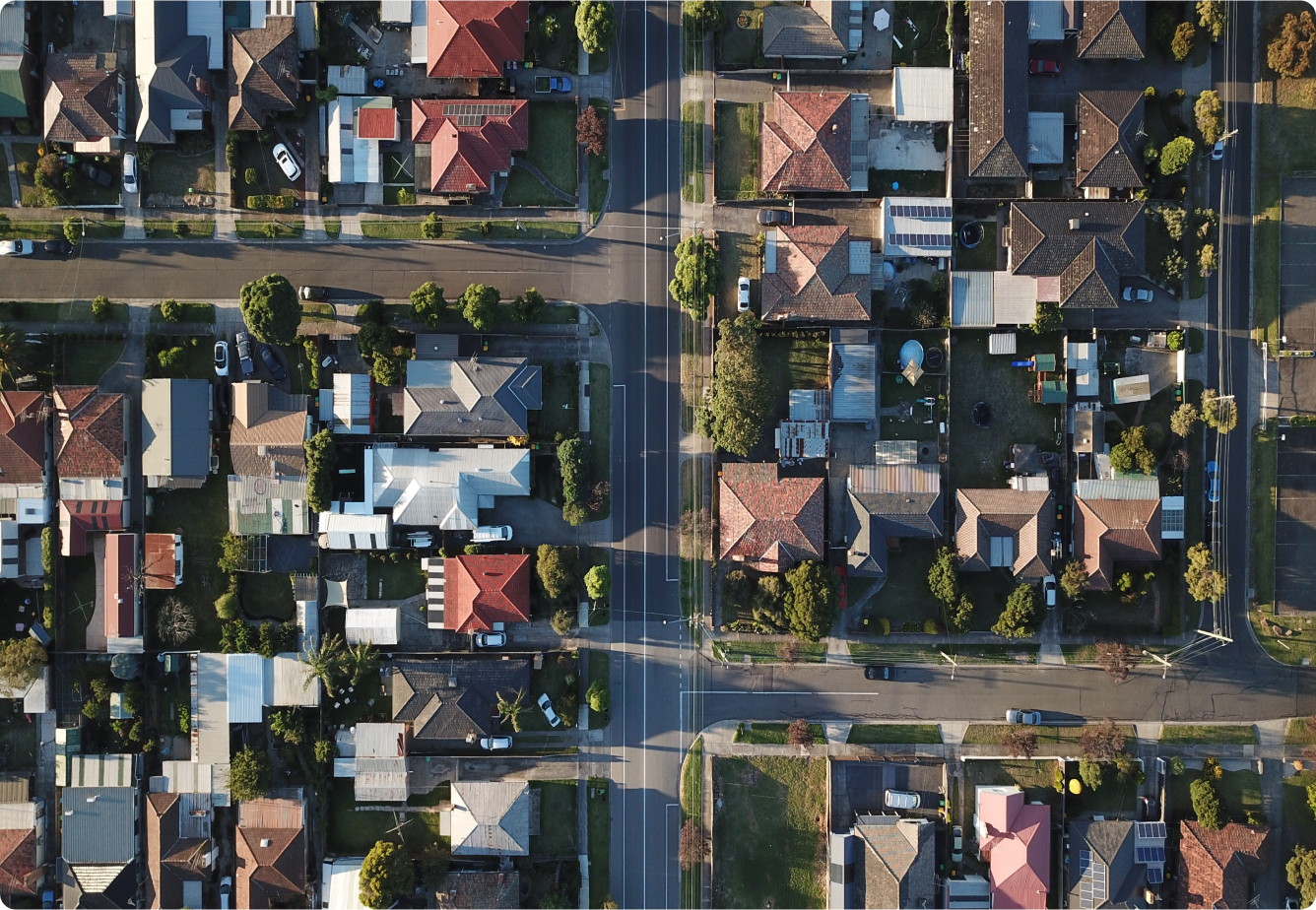Affordable housing is a growing need for many across the United States.
Maybe you’re a student working your way through college. Maybe you’ve suddenly been fired or lost a family member whose income and support you relied on. Or maybe you’re someone with long-term financial concerns and are struggling to find a place to live.
For those in dire financial straits, affordable housing provides a critical safety net to prevent housing insecurity and homelessness.
The need for a cheaper apartment or home comes down to more than cost. Those who need affordable options most often face other barriers as well, such as bad credit scores and prior evictions, making it difficult to nail down a long-term traditional lease.
What happens when people can’t afford to rent and affordable housing options are limited?
A 2020 affordable housing gap analysis by The National Low Income Housing Coalition (NLIHC) showed the seriousness of the housing crisis and the growing income inequality.
- 44% of workers aged 18-64 are in low-wage jobs.
- More than 38 million Americans remain in poverty.
- Homelessness has increased by 3% since 2018.
- 10.9 million renter households are extremely low income.
- 7.7 million of those households spend over half of their incomes on rent and utilities.
- For every 100 extremely low-income renter households, there are only 36 affordable and available homes.
The cost of living in cities like Tampa is only going up. This puts low-income people in a tough spot, forcing them to consider options like couch surfing with friends or family, staying at a low-cost motel, or taking the risk of becoming homeless.
Affordable housing options allow families and individuals to save money and build financial stability when they need it most.
Whether you need a place to live or want to host a space for low-income renters, here’s everything you need to know about affordable housing in Tampa.
What Is Affordable Housing?
Affordable Housing means more than just being able to cover the rent. Families must be able to pay for other critical needs like food, clothing, medicine, and transportation as well for housing costs to be considered affordable. Typically, this means housing costs account for 30% or less of a family’s gross income.
When local, state, and federal governments define what makes housing affordable, they usually base this on “AMI”—or, the Area Median Income. AMI is the median income between the poorest and wealthiest households in a region.
The AMI for Tampa-St. Petersburg-Clearwater for 2021 was $72,700.
When housing costs are too high, it’s harder for those who earn below a certain income to afford rent and other important living expenses. This puts families at risk of homelessness and pushes them out of high-cost areas, which can be a detriment to local communities.
The National Low Income Housing Coalition’s 2021 “Out of Reach” report found that those working full-time minimum wage jobs couldn’t afford a two-bedroom apartment anywhere in the country.
In 93% of counties across the U.S., they couldn’t even afford a modest one-bedroom rental, the report found. You’d need to earn an hourly wage of at least $24.90 for a two-bedroom and $20.40 for a one-bedroom rental, an increase from the previous year.
Research shows, Families of color are the most cost-burdened renters, most at risk of eviction, and most likely to miss a rent payment. The impacts of COVID-19 only exacerbated this inequity in housing security. Black, Latinx, and Asian workers experienced job loss at a higher rate than their white counterparts during the pandemic, and also faced a higher cost burden from COVID-19 hospitalizations and deaths.
As a result of these inequities, renters of color have disproportionately struggled with paying rent on time. Considering these reasons and other housing practices that disproportionately impact communities of color, affordable housing solutions can and should build more equitable communities.
Affordable housing programs and policies in the U.S., such as those run by the Department of Housing and Urban Development (HUD), seek to address the housing needs of low-income families. Affordable housing projects can also stem from state, local, or other sources such as nonprofits and private companies.

Tampa’s Affordable Housing Crisis
In recent years, Tampa has become one of Florida’s most populous cities and has seen an influx of new residents and businesses. As a result, housing costs are going up, and affordable housing options in Hillsborough County continue to fall short of the needs of low-income renters.
As of April 2022, the county is at least 11,000 rental units short of demand. This marks a massive improvement from the previous year’s 51,000-unit deficit. Though with rent reported at least 50 percent up, the need for affordable housing remains.
Exacerbating the Tampa housing crisis is a surge in population growth over the past several years, which exceeds the annual national average, as well as the high levels of inflation.
An additional 71,395 residents have moved to the city of Tampa over the past decade, a 21.27% increase. The median rental costs are currently $1,694, up from $1,370 in 2021.
Despite a lack of state and federal support, local officials have made efforts to tackle the crisis and expand affordable housing options in the Tampa metro area. Over the past few years, the city has invested over $25 million in assistance programs to improve housing affordability. The city’s plan includes a focus on increasing housing supply and programing, improving policy and alignment outcomes such as zoning and land use codes, and increasing community outreach and engagement.
The city set a goal of increasing the supply of affordable housing units by 10,000 by 2027. It also plans to expand existing affordable housing programs like the rental subsidy program and “HOME Tenant-based Rental Assistance program,” which offers up to one year of rental support for “individuals emerging from homelessness.”
Yet the city admits there are many challenges to meeting the growing needs for affordable homes for thousands of Tampa’s most vulnerable residents. More than 25,000 residents are currently on the waiting list for public housing or a housing voucher from the Tampa Housing Authority, with average wait times as long as ten years.
Tampa is far from the only city facing an affordable housing crisis. Cities across the country are seeing similar difficulties. In general, there are two main housing challenges low-income families face: Lack of Supply and Lack of Access.
Tampa’s Lack of Affordable Housing Supply
The fact is that the number of currently available affordable housing units is far less than the number of low-income families who need them. In cities across the United States, the rate of construction of new affordable housing can’t keep pace with demand.
Extremely low-income renters in the U.S. face a shortage of 7 million affordable and available rental homes, according to 2018 census data cited by the NLIHC.
Almost half of all renters, comprising 20 million households, were “housing cost-burdened,” the same study found. 10.8 million of those households spent at least 50% of their income on housing.
Despite more than 3.3 million affordable homes having been built using Low Income Housing Tax Credits (LIHTC), demand still exceeds the pace of construction. Estimates show it could take decades to meet demand at the current rate.
Cost-burdened renters don’t have time to wait. They need solutions and better access now.
What are the Barriers to Affordable Housing in Tampa?
Low-income renters may have trouble meeting the high barrier to getting into a typical rental agreement. Many aren’t able to qualify based on requirements that they earn three times the monthly rent. Up-front deposits, credit score checks, and long-term commitments can all keep these families from being approved for a traditional lease.
When renters have low credit scores, utility startup costs may include a large out-of-pocket deposit. A typical lease may not cover utilities. Renters faced with these barriers may be forced into unstable living arrangements like staying with friends or family members or in extended-stay motels.
When these options aren’t available either, renters may end up living in illegal rooming houses with slumlords, or else they may become homeless.
The affordable housing crisis is real. In cities across the United States, it’s clear that low-income families and individuals need better access to housing they can afford. When renters can secure a stable and affordable living environment, it allows them to pursue their personal goals and improve their lives.
Find a furnished room for rent - all utilities included

Traditional Affordable Housing Options in Tampa
Tampa provides different types of affordable housing options depending on a person’s individual needs and situation. Public housing or Section 8 may make sense for some, while co-living with roommates may make more sense for others.
It can be challenging to find the right affordable housing option for you and your family. Yet with the right information, you can find a living arrangement that makes the most sense for your unique circumstances. Here are a few examples of affordable housing options available in Tampa.
Section 8 Housing in Tampa
The Tampa Housing Authority offers 10,235 housing choice vouchers for very low-income families. These vouchers cover the difference in monthly rent on an approved unit after families pay “at least 30 percent (but no more than 40 percent initially) of their monthly adjusted income toward rent directly to the landlord.” Very low income means a household earns below 30% of the median income in the Tampa area, as defined by HUD. HUD offers subsidy payments for rental units being rehabilitated under the Section 8 Moderate Rehabilitation Program.
The current adjusted annual income limit for a single person to qualify in Tampa is $14,050.
Yet qualifying for these vouchers in Tampa can take time that renters simply don’t have, as waitlists can be long and new applications can only be submitted when spots open up. The program last opened in October of 2021 and received over 18,000 applicants—of which only 3,000 were placed based on a lottery system. It may not open again for at least 2-3 years, the Tampa Housing Authority states.
The Problem with Traditional Rents in Tampa
For low-income renters, traditional rental agreements are the most out-of-reach option. These agreements usually come with extremely high barriers to approval, and they often require a long-term commitment of at least 12 months. And rent costs are going up. The Tampa Bay Times reported that last year, Tampa Bay saw a 24% rent increase, the highest of any metro area in the United States. This leaves thousands of families simply unable to afford a traditional rental unit.
What Affordable Housing Nonprofits Operate in Tampa?
Various nonprofits provide affordable housing help to low-income Tampa residents, many of which have partnered with the city, including nonprofit public service and housing partners. A few of these include Hillsborough County Habitat for Humanity, Dawning Family Services, Housing & Education Alliance, several ministries, behavioral health treatment providers, senior and mentorship programs, and more.
Public Housing Options in Tampa
The Tampa Housing Authority currently oversees 450 public housing Annual Contributions Contract (ACC) apartments, in addition to “a 76-bed Assisted Living Facility and the fiduciary responsibility for 2,553 mixed-financed affordable and market-rate units throughout Hillsborough County.” Public housing is meant to provide affordable housing for low-income families, the elderly, and those with disabilities. Families must earn $34,000 or less per year to qualify. There are 25,000 residents currently waiting for either public housing or a housing voucher.
Are there Housing Options for Veterans in Tampa?
HUD and the VA have teamed up to create the “U.S. Department of Housing and Urban Development-VA Supportive Housing (HUD-VASH).” HUD-VASH provides housing vouchers and VA supportive services to Veterans and their families, as well as medical care and mental health services. The VA also offers several independent programs for low-income or homeless Veterans, such as Supportive Services for Veteran Families (SSVF) for promoting housing stability and rapid rehoming.

How PadSplit Solves Affordable Housing in Tampa
Tampa and other cities offer many public, private, and nonprofit affordable housing solutions, yet the crisis low-income renters face demands a more immediate solution. Families should never be forced into housing insecurity or homelessness.
Coliving provides a different approach to affordable housing. Coliving simply means living with adult roommates in a shared residence. Coliving arrangements can secure, furnished rooms, and other perks such as utilities, WiFi, and other amenities.
PadSplit is a coliving Membership program focused on financial rehabilitation and stability. At PadSplit residences, Members can live affordably in a rental without the high barriers to entry of a traditional lease. PadSplit offers an opportunity for more stability and flexibility.
A few of the benefits PadSplit offers its Members include:
How affordable are PadSplit’s rooms for rent?
To pay for the average cost of an apartment in Tampa, you need to bring in at least $59,360 annually. That’s not including move-in costs and other expenses.
PadSplit ensures that Members won’t face these high financial barriers to renting. We can place you in one of our secure, private rooms for as little as $129 in move-in costs and $629 per month on average. We also include services like utilities, internet, telehealth services, and free credit reporting with this monthly cost. You can qualify for PadSplit making as little as $15,000 per year, even if you have a low credit score.
Do PadSplit Room Rentals Offer Flexible stays?
PadSplit Members don’t sign a long-term agreement forcing you to stay at a certain property for 12 months or more, as you would with a traditional rental agreement. You agree to live in one of PadSplit’s private rooms for at least one month. After that, you pay rent weekly and can leave your living arrangement whenever you need to.
How does PadSplit keep Members Safe?
Living with others can provide a sense of community, though with co-living comes a demand for security as well. Coliving lets you be a member of a group with diverse backgrounds, beliefs, and perspectives. PadSplit Members benefit from this sense of community. We also work to provide a safe and secure living environment for our Members.
All Members will undergo a background check and employment verification. We provide each Member with a private room with access to common areas.
Members who cause disputes or violate other rules risk losing their key access to PadSplit properties. If you aren’t happy with your PadSplit arrangement, you can transfer to another location for free within the first two weeks.
PadSplit Members save an average cost savings of $420 per month. Use our Rent Savings Calculator to see how much you can save today.
---
The PadSplit team brings decades of experience, with a shared passion for helping our community and a collective vision of empowering all of our Members to reach financial independence. PadSplit Members only pay one bill each week for a private furnished room, all utilities, free credit reporting, and access to free telehealth services. Members save an average of $420 per month. Contact us at (770) 373-7863 or support@padsplit.com to learn more.